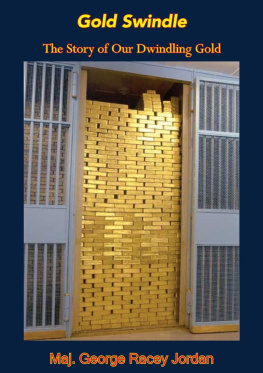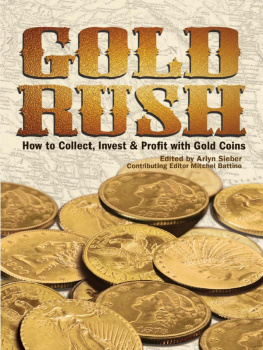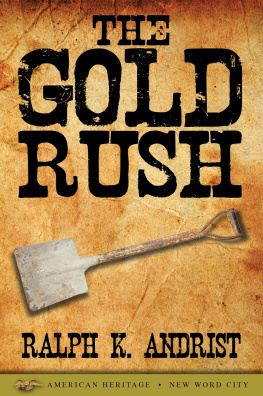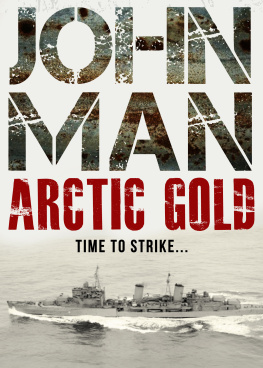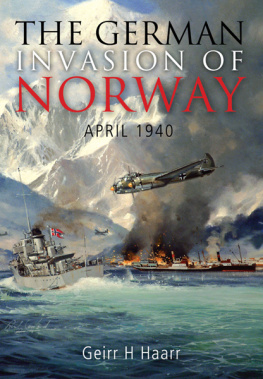Published in Great Britain and
the United States of America in 2015 by
CASEMATE PUBLISHERS
10 Hythe Bridge Street, Oxford OX1 2EW, UK
and
908 Darby Road, Havertown, PA 19083, USA
Casemate Publishers 2015
Hardcover Edition: ISBN 978-1-61200-286-6
Digital Edition: ISBN 978-1-61200-287-3
A CIP record for this book is available from the British Library
All rights reserved. No part of this book may be reproduced or transmitted in any form or by any means, electronic or mechanical including photocopying, recording or by any information storage and retrieval system, without permission in writing of both the copyright owner and the above publisher.
The right of Robert Pearson to be identified as the author of this work has been asserted by him in accordance with the Copyright, Designs and Patents Act 1988.
Typeset and design by Casemate Publishers
Printed and bound in the UK by Short Run Press, Exeter
Originally published as Redd Gullet! by Dinamo Forlag, Norway
Dinamo Forlag 2010; Robert Pearson 2010
For a complete list of Casemate titles, please contact:
CASEMATE PUBLISHERS (UK)
Telephone (01865) 241249
Fax (01865) 794449
Email:
www.casematepublishers.co.uk
CASEMATE PUBLISHERS (US)
Telephone (610) 853-9131
Fax (610) 853-9146
Email:
www.casematepublishing.com
Preface
The purpose of this book is to document the transportation of Norwegian gold bullion from Norway to the United Kingdom during WWII when Norway was facing the darkest period in her history. Where required, I have given a brief over-view of events peripheral to the transport, but it is not within the domain of this account to go into fine detail the reasons why Norway was invaded during April 1940. For further and more detailed information on books available I refer the reader to the bibliography.
The objective from the outset has been to present the information as a balanced, factual account based on primary evidence from people directly and indirectly involved with the bullion. On occasions I have relied on documented evidence submitted to museums and archives and have used the material as supporting evidence to the story. Where evidence has been presented in Norwegian or German I have sought translation and submitted this evidence without attempting to compromise the original text. Invariably, some words are lost in translation and I apologise for this. All translations into English are my responsibility and mine alone.
The operation of the gold transport and its influence on the Norwegian Government, the armed forces in exile and the Norwegian people has, in my opinion, been overshadowed by the subsequent calamitous events that surrounded the allied attempt to free Norway followed quickly by the Dunkirk evacuation after the fall of France. Yet the movement of almost 50 tons of gold bullion from Oslo to three west coast ports and then in three separate shipments to the UK, one of which included the rescue of King Haakon, Crown Prince Olav, members of the Norwegian Storting and various foreign officials is as astonishing as it is remarkable.
The invasion of Norway was an imperative strategic repositioning by the Germans who were fearful of the Allies outflanking them. It enabled the Germans to break the British blockade of the North Sea, but it was also a strategic encumbrance tying up valuable capital ships, aircraft and troops. The Germans also misunderstood and miscalculated the reaction of the Norwegian mercantile fleet - the third largest and most modern merchant marine fleet, which was promptly given over to the Allies. For Britain, an opportunity to secure vital iron-ore supplies had been lost: the German invasion of Norway was more than just a thorn in the side of the Allies. But as Geirr Haarr observes in his book, The German Invasion of Norway, the full strategic significance of Norway only emerged after the German invasion of Russia. Later, during the allied invasion of Europe, Norway once again proved to be of strategic importance, but this time to the advantage of the Allies as the Germans, fearful of an allied invasion of Norway, retained nearly 400,000 troops there.
In the UK, the Norwegian Government-in-exile wisely moved the bullion once more, fearing a possible invasion of the UK during 1940, but this time the bullion was transported to the very safe havens of Canada and America, save for a small amount retained in the UK. The significance of the bullion, along with the merchant marine fleet then became fully apparent with the Norwegian Government able to financially administer its part in the war effort on an equal footing with the Allies.
The loss of the bullion was a blow to the Germans. They had gained a country, but lost a King, a government, a merchant marine fleet and nearly 50 tons of bullion that would have financed their war machine. That loss is directly attributed to a visionary bank chief, a Colonel, a hastily assembled body of Norwegians and the ships and men of the Royal Navy. Ever resourceful, brave and loyal to their respective countries; this is their story.
Robert Pearson
Acknowledgments
There are many people who have generously, willingly and unselfishly given their time and assistance to help me with my research; I am indebted to their knowledge, support and encouragement throughout. I have not just benefited from their expertise and wisdom, but have also been fortunate in gaining their friendship, which for me is beyond measure. I hope it is not seen as crass and is certainly not intended to be, but without their guidance and comprehension of the subject area, historical corrections, and grammatical amendments as well as their plenteous assistance and at times going way beyond the boundaries of hope and expectation to contribute, then this book would have been nigh on impossible to research and complete. In particular I would like to mention Geirr Haarr for his consummate comprehension of Norwegian WW2 history, particularly in all matters relating to the period of 1940 as well as for his guidance and direction when I needed it; Arild Bergstrom who has unstintingly, efficiently and without compromise provided information that has enabled me to further my research when I thought I had reached an impasse. To Juliette, my wife and my family of Matthias, Jared & Enya for their understanding and patience. Also, significant to the research of this book and without whom little would have been achieved are the following:
Hans Olav Henanger, Ivar Kraglund, Roger Tobbell, Professor Dag Tangen, Professor Tore Pryser, Christian Falch, Tor Christian Jevanord, Merry Swan, Gunnar Bols, Ian Bowater, the late Edward du Cann, Cato Guhnfeldt, Howard Davies, Unni Dorum, Tore Eggan, Ivar Enoksen, Berit Fougner, Mette Krefting, Ian Foulkes, Frode Sland, Roald Gjelsten, Steve Griffin, Rob Guyatt, Gunnar Snsterby, Ragnar Ulstein, William Hakvaag, Ron Hogg, Kai Isaken, Richard Karlsseon, Erling Krange, Magne Lien, Ole-Johan Larsen, Gunnar Arne Lvlund, John Makie, Anita Erin Melkevik, Michael Smith, Sarah Millard, Charles Millnar, Arnfinn Moland, Oddvar Naas, Professor Ole Kristian Grimnes, Oddbjorn Skarbovik, Don Oliver, Per Martinsen, Dag Reppe, Sven Erik Rognes, Rolf Dahl, Liv Ronneberg, Jostein Saakvitne, Ole Gunnar Stre, Graham Salt, ivind Solvik, Tore Tomter, Stian Trovik, Janet Voke, Ove Voldsrud, Inge Voldsrud, Ole Voldsrud, Aksel Melster, Anis Bonsor, Asbjrn Nakke, Boutwood family, Dorothy Baden-Powell, Grace Burns, Guttorm Reppe, Hans Olaf Brevig, Horace Grant RN, Jack Hall RN, James Irvine, Jan Reimers MBE, Per Haugerud, Per smundstad, Olaf Hartmann-Johnsen, Joe Kynoch, Doris Kynoch, Lita Deinboll, Jan Tystad, Kjell Thoresen, Liv Karin Lange, Erik Birkeland, Leif Aagard, Reg Samways RN, John Frederick Baker, Martin Carroll, S W. Crabb RM, Donald M. Edwards RN, Harold Hall RN, Alfred Hunt RN, John Kelleher RN, Jack A. Lovelock RN, Alfred A. H. Luke RN, Cyril Kenwyn Milner RN, Thomas W. Morton RN, Leif Arneberg, Peter Bell, Arnfinn Haga, Arvid Witzoe, Christopher Sporborg, the late Joan Bright-Astley, Erling Iversen, Randi Bell, Julia Korner, Mark Florman, the Fougner family (Lillehammer), Barbara Melkavik, Robert Binks, Cath Piddington, Peter Cann, Tracey Bishop, Stian Beinset, the Palmer family, Lene Bckman-Pedersen, Pat Gruber, Asbjrn Nakken, Heather Johnson, and the Torgersen family (Bergen), Sue Laughlin. Hjemmefrontmuseet (Oslo Resistance Museum), Romsdalmuseet (Molde), Norges Bank, North Sea Traffic Museum Shetland Bus (Bergen), RAF Tempsford Museum, Mres Fylkes Rutebtar (MFR), Rica Hotel (Molde), Riksarkivet (Oslo), The Navy News (UK), Romsdal Budstikke, Per Kre Tveeikrem, The National Archives, London, E. Birkeland AS (Molde), Gemini Recording Studios (Ipswich), Samlerhuset, Kolbotn, The London Gazette, Royal Naval Museum, Portsmouth, Imperial War Museum, www.godebilder.no, www.nuav.net, www.samlerhuset.no.



